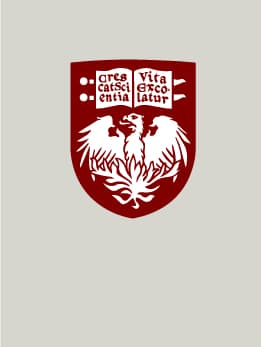Osteoarthritis: Causes, Symptoms and Treatments
Osteoarthritis (OA) is the most common form of arthritis, affecting millions of people worldwide. Our expert orthopaedic team is dedicated to helping you understand this condition and providing top-tier care tailored to your needs..
Why Choose UChicago Medicine Orthopaedics for Osteoarthritis?
UChicago Medicine orthopaedic specialists are leaders in the osteoarthritis, offering front-line treatments and compassionate, patient-centered care. Whether you're experiencing the early signs of osteoarthritis or have been managing the condition for years, we're committed to working with you to achieve the best possible outcome for your specific symptoms.
If you're struggling with joint pain or suspect you might have osteoarthritis, don't hesitate to reach out. Our team is here to guide you every step of the way, ensuring you receive the care you deserve.
What is Osteoarthritis?
Osteoarthritis occurs when the protective cartilage that cushions the ends of your bones wears down over time. This degenerative joint disease primarily affects joints in hands, knees, hips and spine, leading to pain, stiffness and decreased mobility. Treatment of arthritis symptoms is important to maintain activity level and quality of life.
Symptoms of Osteoarthritis
Understanding the symptoms of OA is essential for early diagnosis and effective long-term management. At UChicago Medicine, our orthopaedic experts emphasize the importance of recognizing the signs in order to slow disease progression and improve your quality of life.
Osteoarthritis symptoms usually develop gradually and the longer they go untreated, the worse the condition gets. Common symptoms include:
- Joint Pain: Pain is the most common and often the first symptom of osteoarthritis. It can vary in intensity, ranging from mild discomfort to severe, debilitating pain.
- Swelling: Swelling in the joints can flare up due to cartilage and soft tissue breakdown, inflammation and bone spurs associated with OA.
- Stiffness: Joint stiffness is another hallmark symptom, especially after periods of inactivity.
- Loss of Flexibility: You may find it harder to move your joints through their full range of motion. As OA progresses, joints may lose full range of motion, limiting your ability to perform everyday tasks.
- Grating Sensation: You might feel or hear a grating sensation when using the joint.
- Bone Spurs: Extra bits of bone, or bone spurs, which feel like hard lumps, are bony growths that can form around the affected joint.
- Muscle Weakness: Osteoarthritis can lead to muscle weakness around the joint, particularly in the legs.
- Joint Deformity: In advanced stages of osteoarthritis, joint deformity can occur due to the combination of cartilage loss, bone spur formation and joint instability.
- Fatigue: You can experience physical and emotional exhaustion with consistent discomfort and can lead you frustration, had to sleep and more.
Causes of Osteoarthritis
While the exact cause of osteoarthritis is not always clear, several factors can increase your risk:
- Age: The normal aging process significantly increases the development and progression of OA, primarily due to the natural wear and tear on joints and age-related biological changes.
- Joint Injury: Previous injuries, such as falls, trauma or accidents, even those that occurred years ago, can damage the joint and lead to osteoarthritis.
- Repetitive Stress: Repetitive stress to joints, caused by activities like heavy lifting, high-impact sports, or poor posture, leads to cumulative cartilage wear and inflammation, accelerating osteoarthritis.
- Obesity: Excess weight puts additional stress on weight-bearing joints like knees and hips, which makes them break down faster.
- Genetics: Some people inherit weaker cartilage or increased risk of joint degeneration, particularly in hands, hips and knees, and a family history of OA raises the likelihood that you will develop the condition as well




